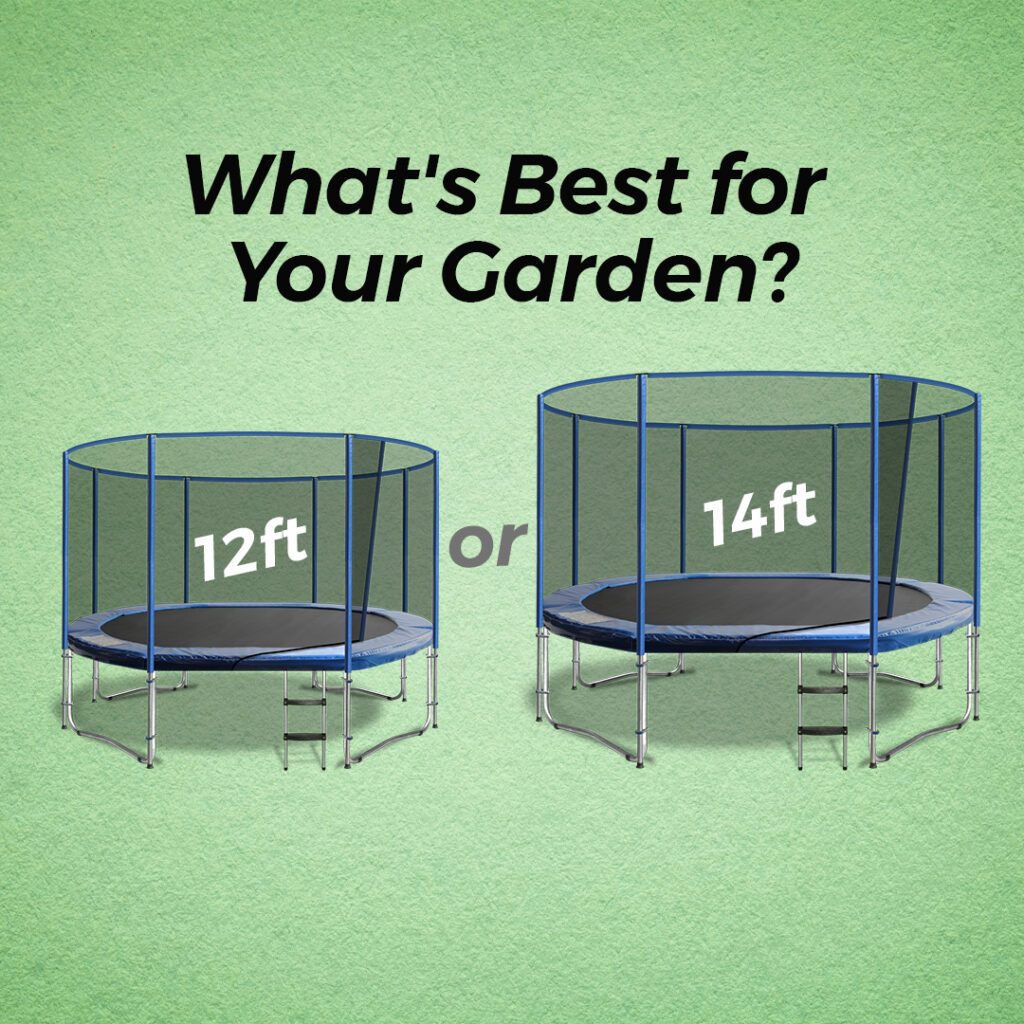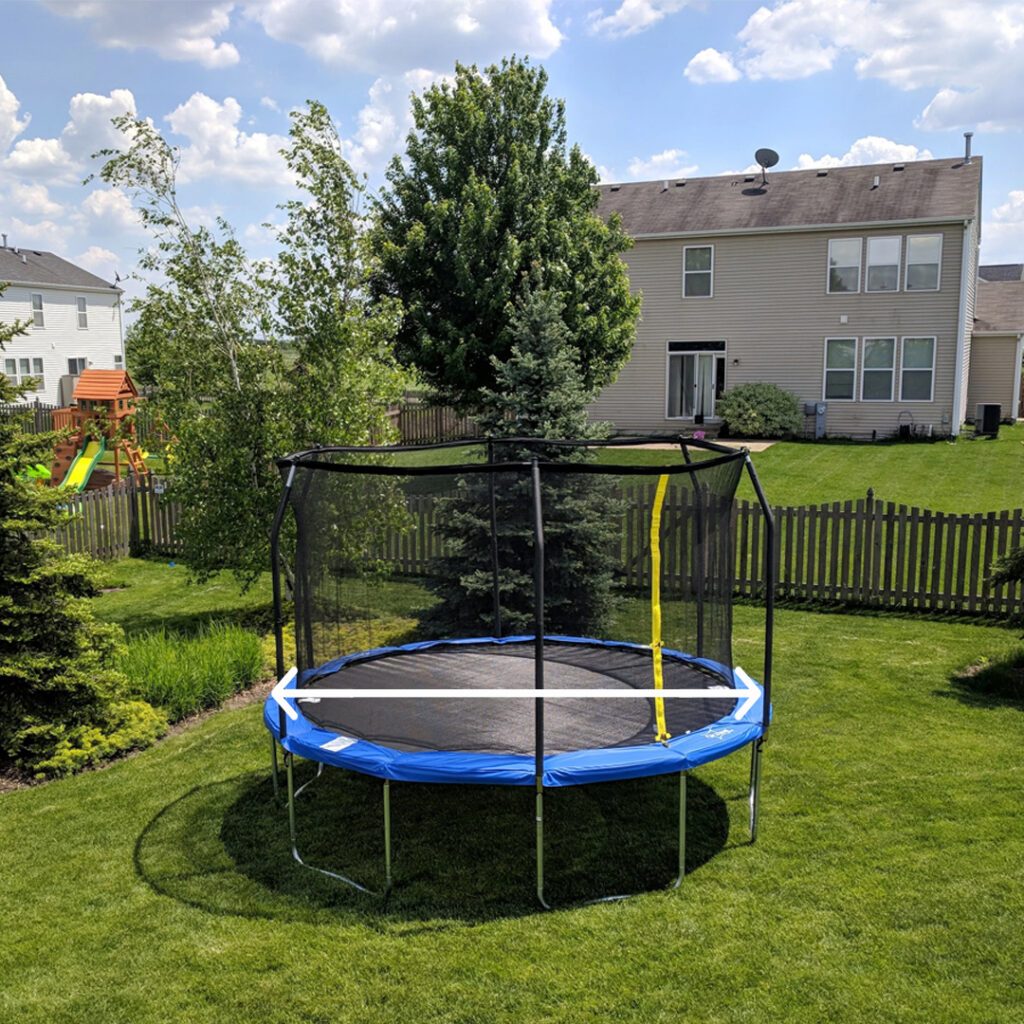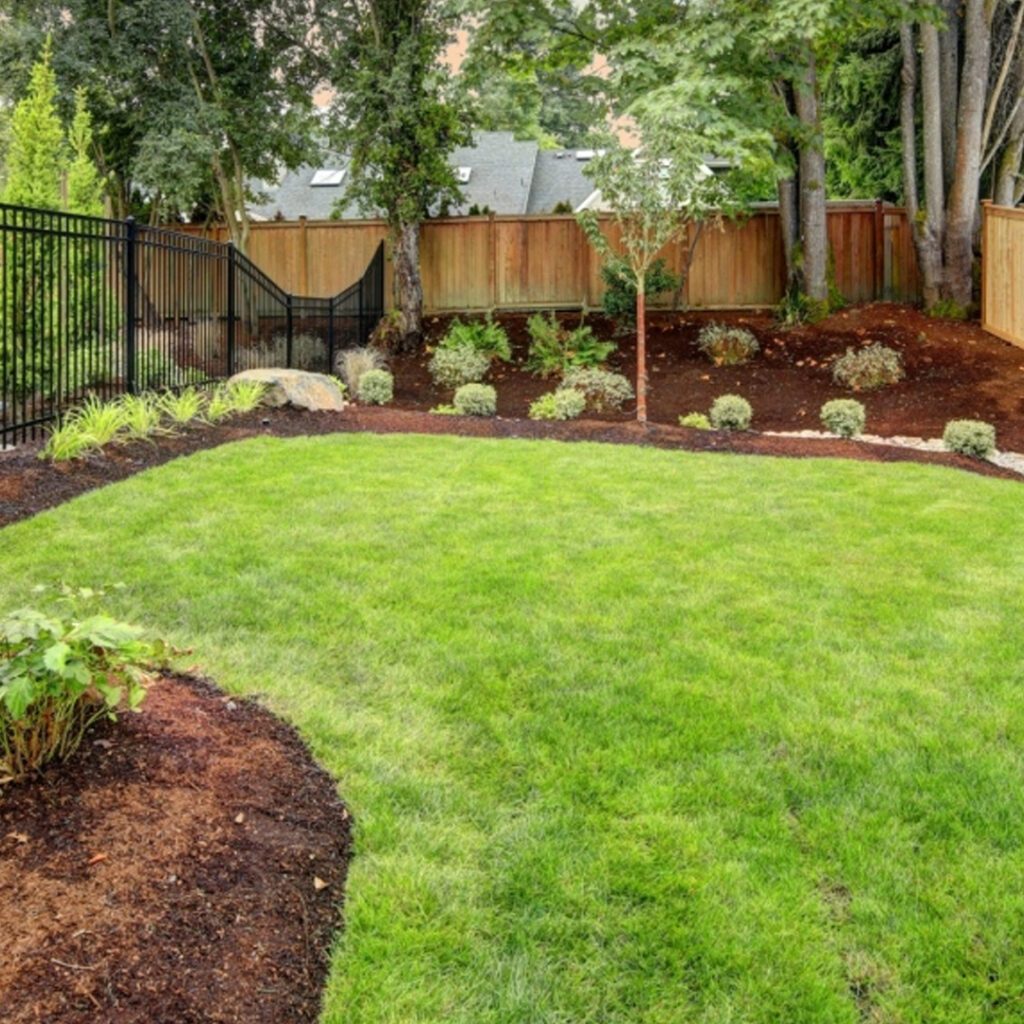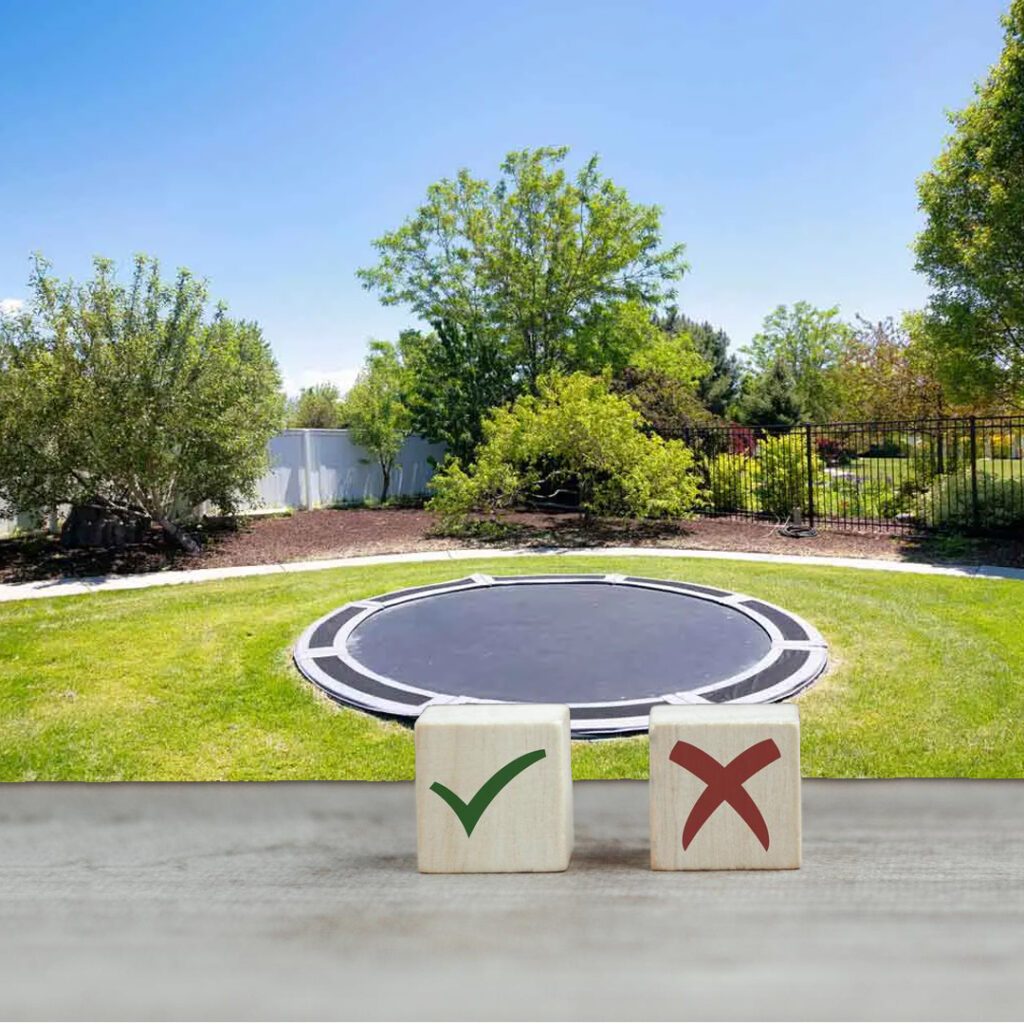
So the big question is, which size playground trampoline should you get? Do you go for a 12ft or 14ft trampoline? Both sizes have their pros and cons, so let’s compare them to help you make the best choice for your space and needs.
A 14ft trampoline will give you a bit more jumping area, which is great if you have a larger family or often have friends over to bounce. The bigger size means more room for games and tricks, and the springs are usually a bit more powerful for higher jumps.
A 12ft trampoline is a bit more compact while still giving you a decent amount of bounce space for most families and solo jumpers. It’s often a bit more affordable and easier to fit in a standard sized garden. The smaller size also means it’s quicker to assemble and disassemble if needed for storage.
In this blog, we will give you a detailed insight and size comparison between 12ft and 14ft playground trampoline.
Trampoline Size Overview

When deciding between a 12ft or 14ft playground trampoline, the size you choose depends on how much space you have available in your garden and how many people will be using it.
Space considerations
A 12ft trampoline takes up about 113 square feet of space, while a 14ft trampoline requires 154 square feet. Make sure you have enough room for the playground trampoline frame, safety enclosure net, and space around the edges for safe use and access. You’ll want at least 6-8 ft of clearance on all sides.
For most average-sized gardens, a 12ft trampoline should fit nicely without dominating the space. However, if you have a larger garden and want maximum bouncing room, a 14ft trampoline is ideal. Keep in mind that the bigger the trampoline, the higher it will sit, so also consider how it may impact your garden view and that of your neighbours.
Capacity
A 12ft trampoline can typically hold 200-250 kg, suitable for 2-3 children or 2 average-sized adults. A 14ft trampoline has a higher weight capacity of 350-400 kg, enough for 3-4 children or a whole family of 4. So decide how many people will realistically be using the trampoline at once to determine the right size.
In the end, you need to weigh up how much space you have, who will be using it, safety, and your budget. While a 14ft trampoline may be more spacious and versatile, a 12ft trampoline takes up less room and costs less. With the right choice and proper safety precautions, a trampoline can provide hours of fun and exercise for all.
Key Considerations When Choosing Playground Trampoline Size

When choosing between a 12ft or 14ft trampoline, there are a few key things to consider:
Available space in your garden
The larger the trampoline, the more space it will take up. Measure your garden carefully and make sure you have enough room for the trampoline size you want, with safety padding, and space around it for safety enclosures.
Age and skill level of jumpers
Younger or beginner jumpers will appreciate the extra stability and control of a smaller 12ft trampoline. More advanced jumpers will benefit from the additional height and space of a 14ft trampoline to practise bigger jumps and tricks.
Safety
A larger trampoline means higher jumps and more momentum, which can increase the chance of injury if proper safety precautions aren’t taken. Always use safety padding, nets, and follow the instructions to ensure safe jumping. For younger children, a 12ft trampoline may be safer.
Budget
Naturally, a larger 14ft trampoline will cost more than a smaller 12ft size. Factor in your budget and how much you can spend to determine the right size for you.
With the right considerations in mind, you can choose a playground trampoline size perfect for your garden and family. Whether you go big or keep it small, the most important thing is that you have fun and jump safe!
12ft Trampolines: Pros, Cons and Best Uses

A 12ft trampoline is a great size for most families and gardens. Take into account the following primary pros and cons:
Size
At 12ft in diameter, this trampoline size offers a good amount of bouncing space for 2-3 children or adults at a time, while still fitting comfortably in a small to medium-sized garden. The key is to make sure you have at least 6-8 ft of clearance on all sides of the trampoline for safety. For the average urban or suburban garden, 12ft trampolines maximise bounce potential within the space constraints.
Cost
Mid-range in size, 12ft trampolines are often the most affordable option. You’ll get a high-quality, durable trampoline that will last for years at a price that won’t break the bank. Replacement parts like pads, nets and springs are also usually cheaper for this size.
Best Uses
A 12ft trampoline is ideal for:
- Families with young children.
- Recreational jumping for fun exercise. Great for cardio, balance and core workouts.
- Learning and practising basic trampolining skills. Size is suitable for getting comfortable with bounces, tucks, twists and flips at a beginner level.
14ft Trampolines: Pros, Cons and Best Uses

A 14ft trampoline offers some significant advantages over a smaller 12ft model. The spacious jumping mat also gives jumpers more room to try out tricks and flips.
More Space to Jump
A 14ft trampoline provides over 50% more jumping space than a 12ft model. This additional room allows jumpers to get higher bounces and try more adventurous jumps. The bigger size is perfect for energetic children and teens who want maximum air time. The larger trampoline bed also reduces the chance of jumpers bumping into or landing on top of each other.
Higher Weight Limits
In general, 14ft trampolines can handle higher maximum weights than smaller models. Their sturdier and more heavy-duty frames and mats are built to withstand the forces generated by heavy weight. The higher weight limits give you flexibility in who can use the playground trampoline.
Of course, the larger size of a 14ft trampoline also has some downsides to consider. It will take up more space in your garden and the bigger frames and mats cost more than those of a 12ft trampoline. Assembly and disassembly also require more effort. For some homes and families, a 12ft trampoline may be perfectly sufficient and the more budget-friendly choice. But if you have the space and budget, a 14ft trampoline offers significant benefits for recreational jumping and fun.
Conclusion
So there you have it, the lowdown on 12ft vs 14ft trampolines. At the end of the day, the size that’s right for you comes down to how much space you’ve got and how many children will be bouncing at once. If you’ve got a small garden and just a couple of little ones, a 12ft trampoline should do the trick and save you some cash. But if you’ve got the room and want to keep a whole horde of children entertained for hours, a 14ft trampoline is probably your best bet. Whichever one you go for, get ready for hours of fun in your own garden.


